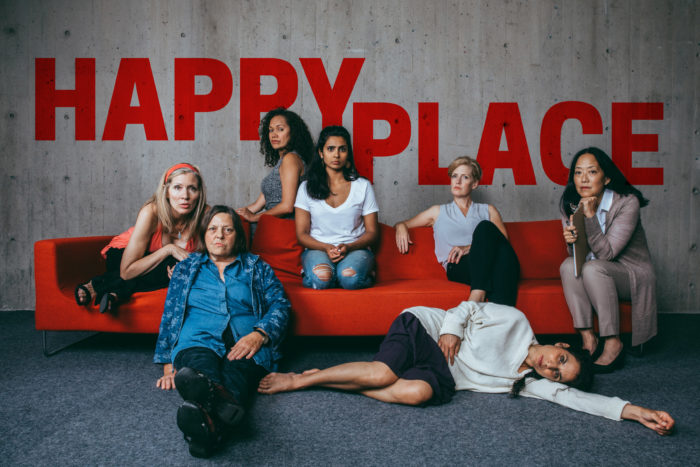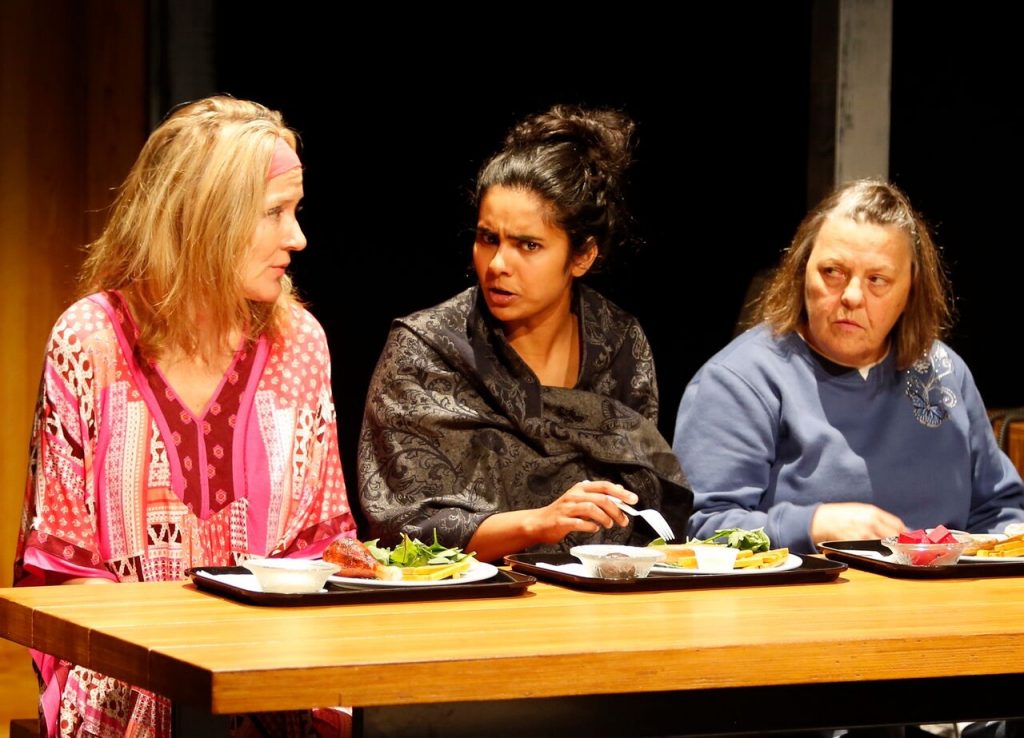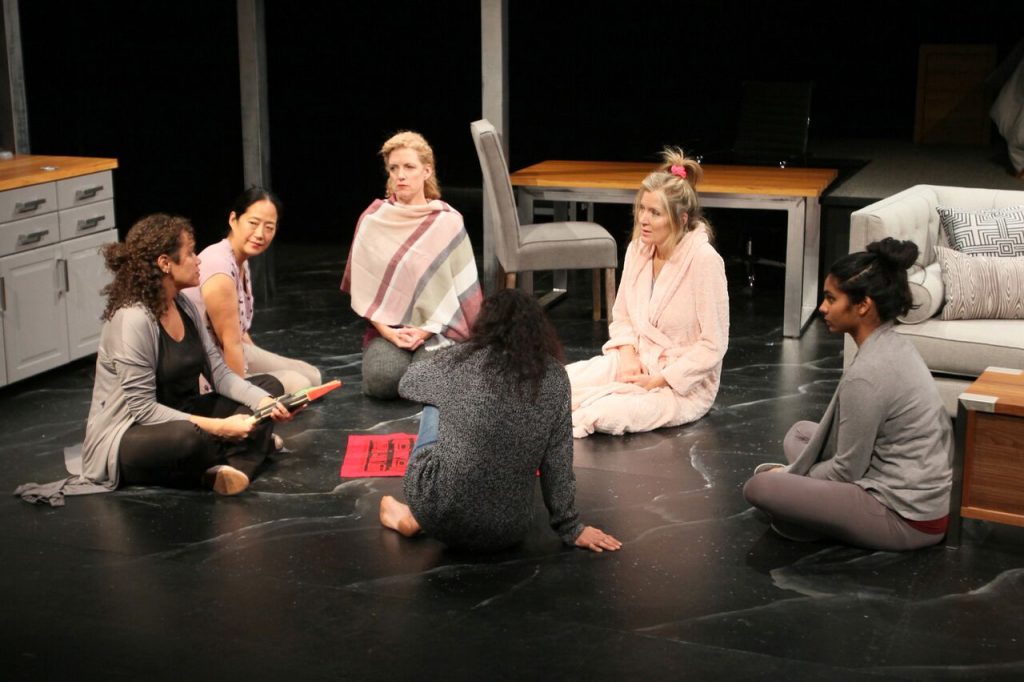
At the Firehall Arts Centre until October 29, 2017
Tickets from $20 at tickets.firehallartscentre.ca/604-689-0926
Posted October 22, 2017
It’s hard to imagine a more dynamic group of actors – all women – sometimes all on the Firehall stage at one time: Diane Brown, Nicola Cavendish, Sereana Malani, Adele Noronha, Laara Sadiq, Colleen Wheeler and Donna Yamamoto. Under the direction of Roy Surette, recently returned to Vancouver after ten years at The Belfry followed by ten years at Montreal’s Centaur Theatre, each actor creates a unique, well-defined individual. Yet despite the characters’ different histories they have one thing in common: attempted suicide.
The setting is a thousand-dollar-a-day in-patient rehab facility. Set designer Pam Johnson hints at fairly luxurious accommodations with the bedroom into which Samira, ‘the new girl’, is assigned: an upstage bed with a comfy duvet and behind which, on the wall, is a large, multi-petalled wall hanging. The bedroom eventually serves as the bedroom; the rest of the set, including a couch and TV, looks less homey, more institutional.

Credit: Tim Matheson
Portraying foul-mouthed, bullying Mildred, who was sexually abused in childhood, is Nicola Cavendish and it’s an absolute joy to see her onstage after a hiatus. However, Mildred’s meltdown – a dramatic highlight of the play – and the subsequent checking herself out of the facility remain a mystery at which we can only guess. Sereana Malani’s Celine, raped twice as a young woman and whose son has been sexually abused, is intelligent and thoughtful but why she reached her tipping point is also unclear. Why would she leave her child motherless? Samira (Adele Noronha), raped five years ago has no memory of her assailant. Standoffish at first, Colleen Wheeler’s Rosemary suffers unbearable grief with the breakdown of her marriage and lost custody of her stepson while Laara Sadiq’s character Nina suffers from false pregnancy.
Diane Brown is gossipy, fragile Joyce who admits very late in Act 2 that she is not sad because her marriage failed; her marriage failed because she is sad. By weighting the play the way she does, Sinha implies that sexual abuse and marriage breakdown are the most common reasons women find life no longer worth living. I don’t know if that’s statistically true but the lack of balance weakens the play. Death of a child? Mental illness? Injury?
The playwright builds Happy Place with short, choppy scenes in which frustratingly small pieces of information are offered. In the end, we feel we don’t know as much as we’d like to about these troubled women, especially Nina and Joyce.

Credit: Tim Matheson
What Sinha clearly points out is that techniques for dealing with suicides have a long way to go. Donna Yamamoto is Louise, the resident psychiatrist/therapist who works with this group of women. Methods include individual counselling, group therapy and ‘craft’. One of the crafts involves painting rocks; another requires each patient to imagine her ‘happy place’ and, using pictures Louise has cut out from magazines, to create a collage of images. Well-intentioned, it comes across as a condescending kindergarten exercise. These women aren’t stupid; they’re suicidal.
The strongest elements in Happy Place are two sides of the same coin: the support these seven actors give each other to get them through this tough material; and the support the patients offer each other – each in their own way. Even tough, raunchy Mildred offers hope and love to Samira in one of the most touching scenes in the play.

Produced by Touchstone Theatre in association with Ruby Slippers Theatre and Diwali in BC, Happy Place is not a bleak play. While we may not fully understand these characters’ motivations, we’re rooting for them. Happy Place leaves us with some fears – there’s no guarantee Mildred won’t be back or that Celine will make it – but there are also glimmers of hope.
Best of all are the outstanding performances by seven women who aren’t afraid to dig deep – and then go deeper. Because of their intelligence and courage, Happy Place is not always an unhappy place.

